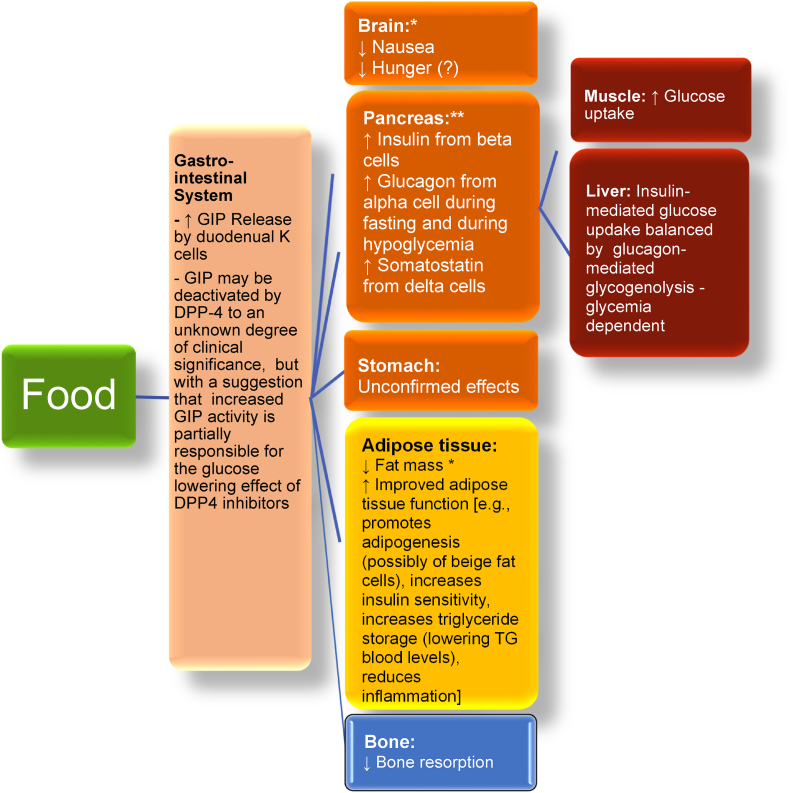Fig. 3b.
Glucose-dependent insulinotropic polypeptide (GIP; previously known as gastric inhibitory peptide). GIP is an incretin. Its incretin effect is impaired in patients with type 2 diabetes mellitus. Combination glucagon-like peptide-1 receptor agonist (GLP-1 RA) and GIP RA are in development, and are illustrated by tirzepatide (Table 7 and Chart 3). [[148], [149], [150], [151], [152], [153], [154], [155]]. DPP IV: Dipeptidyl Peptidase IV. ∗ Unless combined with GLP-1, it is unclear that GIP receptor agonism alone reduces hunger and reduces body fat. However, GIP may enhance some of the effects of GLP-1 receptor agonism. The anti-nausea effects of GIP agonism may reduce the nausea adverse experiences described with GLP-1 receptor agonists [156,147]. ∗∗ In patients without diabetes, GIP increases insulin secretion and enhances deposition of fat in adipose tissues. In patients with diabetes mellitus, GIP may lose its insulinotropic effect, but retain a stimulatory effect on glucagon secretion – potentially worsening glucose levels [157]. However, as before, GIP receptor agonists may enhance some of the favorable effects of GLP-1 receptor agonists when administered concomitantly.

